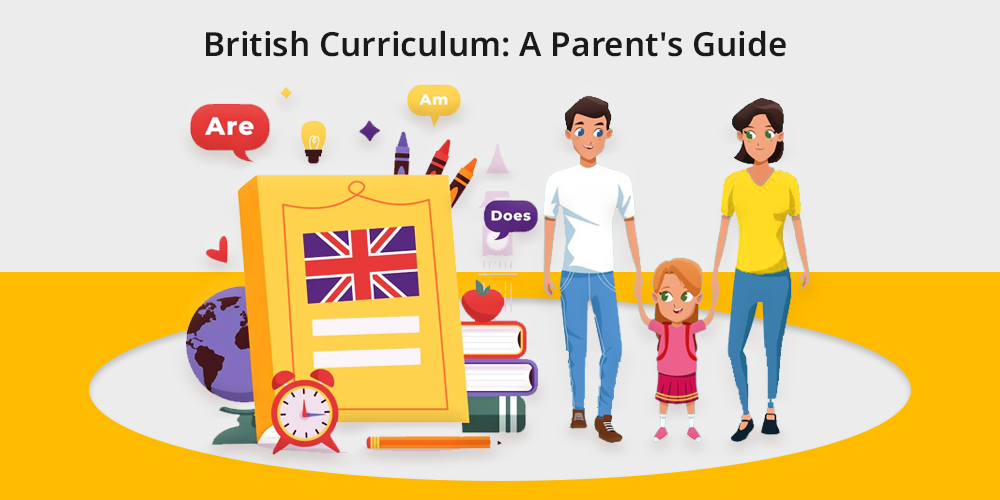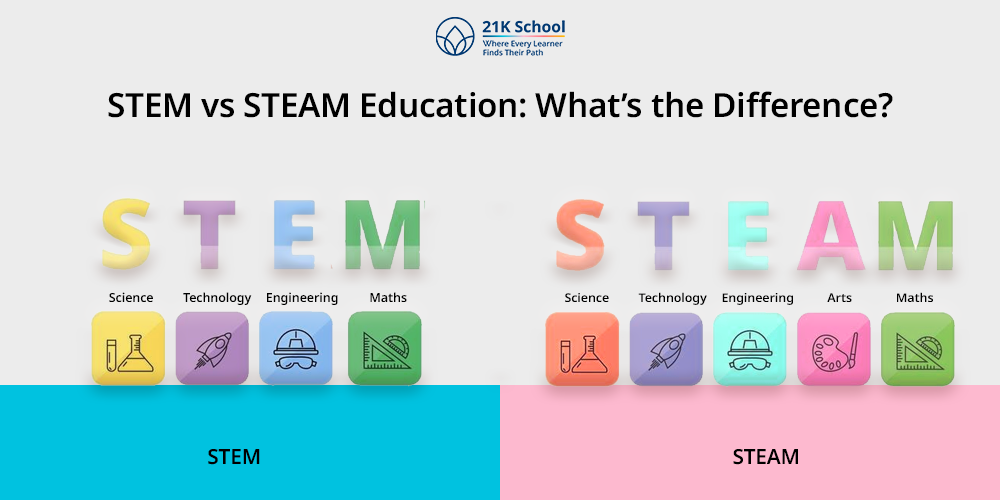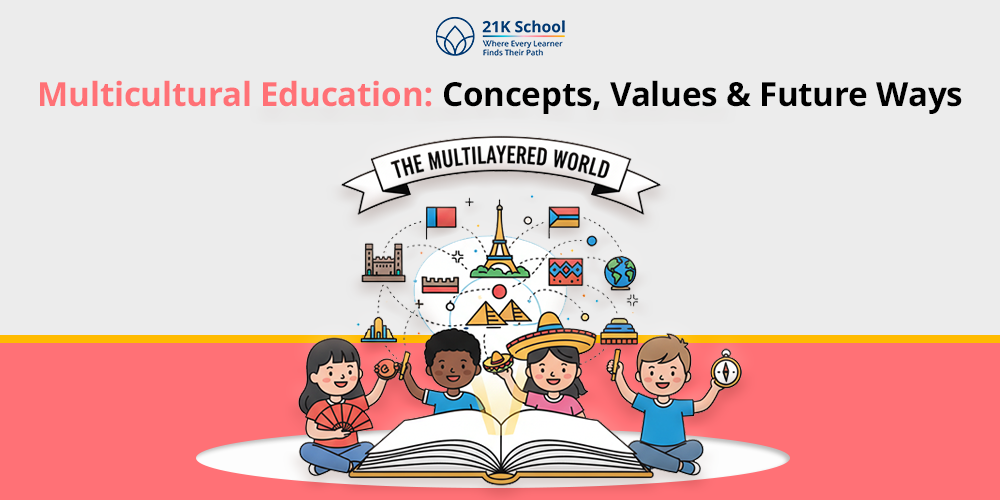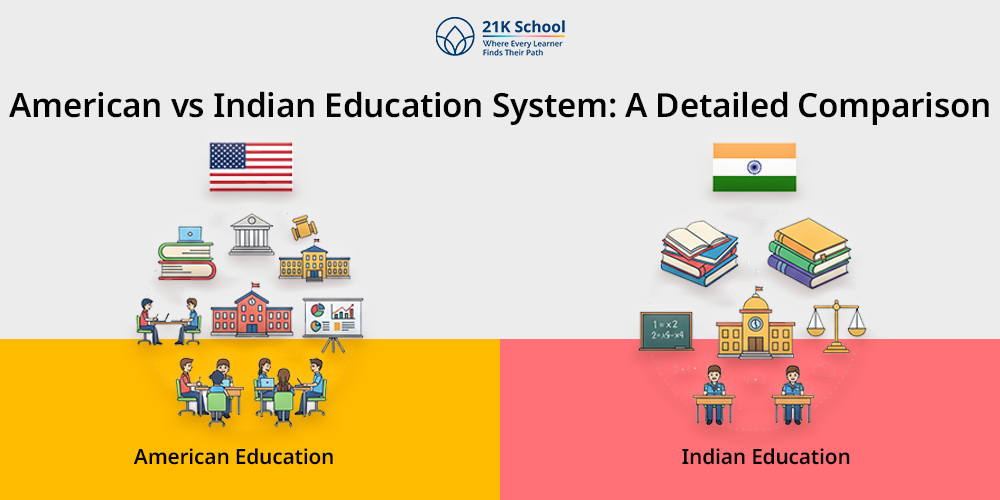
Choosing the ideal curriculum all leads to a beautiful journey toward knowledge, education and success. It can impact child learning and development.
In today’s globalized world curriculum means a plan that outlines the learning experiences a student will have. It’s an easy approach to learning.
Learn the best way to choose the right curriculum for your child in the 21st century.
However, one of the most popular curricula is the British curriculum. It is a structured educational framework used to provide a broad and balanced education.
In this blog, we will dive deeper into the British curriculum and to help parents understand the structure, strengths, and patterns.
Contents
- What is the British Curriculum?
- Key Features of British Curriculum
- Key Stages of British Curriculum
- British Curriculum Subjects and Teaching Approach
- British Curriculum Assessment and Exams
- Benefits of the British Curriculum
- Challenges of British Curriculum
- Why Choose a 21K School for the British Curriculum Option?
- How Parents Can Support Students in British Curriculum?
- Comparison Between British and Indian Curriculums
- Tips for Teaching to Implement British Curriculum
- Conclusion
What is the British Curriculum?
British Curriculum also refers to English National Curriculum. It is a framework for education in England, emphasizing critical thinking, creativity, and a broad range of subjects.
It has various stages to cater to every age group of students. The objective of the curriculum is to provide a balanced education for future growth.
The curriculum is a clear progression of learning objectives and assessments from childhood to pre university education.
Homeschooling is an ideal approach to concur success in modern education read homeschooling curriculum to understand the difference.
Key Features of British Curriculum
Ets understand some essential key features of the curriculum:
1. Broad and Balanced Curriculum
One of the key features is a broad and balanced curriculum which ensures that students develop a wide range of skills and knowledge.
This broad or long curriculum covers core subjects such as Math, Science, English etc and additional subjects like arts, humanity and creativity.
Know what is the curriculum in education and its types.
2. Child-Centered and Personalized
The British curriculum is created based on a child-centered and personalized learning approach.
This means it ensures kids’ needs and interests while fostering critical thinking and a broad base of knowledge.
3. Optional Subjects
With optional subjects students can easily explore the areas of interest, enhancing their education with choices like art, music, drama, and more.
Remember in modern education only core subjects are not enough students need to understand optional subjects, extra curricular activity, gross motor skills activities etc.
4. Emphasis on Critical Thinking
The main aim of this kind of curriculum is to emphasize critical thinking by motivating kids to learn through questioning, problem-solving, and creative thinking etc.
Rather than memorization, critical thinking abilities are more helpful.
Key Stages of British Curriculum
The English National Curriculum is one of the well organized ones which has key stages to guide education from early childhood through secondary school.
Here’s the elaborated version of each stage to understand accurately:
1. Early Years Foundation Stage (EYFS)
For ages 3 to 5, EYFS focuses on play-based learning, helping children develop basic skills in communication skills, language, physical development, and personal, social and emotional learning skills.
2. Key Stage 1 (KS1)
Ages 5 to 7. This stage includes early education and the core subjects like English, Maths, and Science are introduced alongside creative and physical activities.
3. Key Stage 2 (KS2)
In Key Stage 2 (KS2) kids ages 7 to 11. This stage is more about students deepening their understanding of core subjects and beginning standardized assessments (SATs).
4. Key Stage 3 (KS3)
From 11 to 14 years old students are considered under stage three curriculum. The stage helps to fulfill the primary and secondary education requirements.
A broader curriculum including subjects like history, geography, and languages. Emphasis on developing analytical and problem-solving skills.
5. Key Stage 4 (KS4)
This key stage of the British curriculum considers the students age between 15 to 16.
Here kids take General Certificate of Secondary Education (GCSE) exams, selecting a mix of core and optional subjects.
6. Key Stage 5 (KS5)
In key stage 5 the students are ages 16 to 18 years old. This is a pre-university stage for students with A-levels or equivalent qualifications.
This allows specialization in chosen subjects.
British Curriculum Subjects and Teaching Approach
By exploring British curriculum subjects and teaching approach one can understand its structure and working properly. Here’s what you should know:
1. Subjects:
- Core Subjects: In the British curriculum the core subjects include English, Maths, and Science. These are the foundational and mandatory subjects for kids’ growth.
- Optional Subjects: Some of the common optional subjects in the British curriculum are Physical Education (PE), and various elective subjects depending on the school.
- Humanities: History, Geography, and Religious Studies are crucial parts of humanities.
- Arts and Creativity: Kids love engaging in new things. The inclusion of art and creativity fulfil their curiosity and improve students’ engagement.
This includes Music, Art and Design, Drama, creative drawing ideas and activities like gross motor skills activities.
- Technology and Computing: Technology and computing are a must needed subjects to match 21st century requirements. Design and Technology, Computing, and sometimes Sport Science are ideal options.
- Physical Education: The British curriculum focuses on developing students’ physical skills, knowledge, and understanding across various sports and activities.
- Citizenship and PSHE: The objective of PSHE is to provide a planned, developmental programme of learning through which children and young people acquire the knowledge and skills.
2. Teaching Approach:
- Differentiated instruction: Differentiated instruction
in English national curriculum enclose designing teaching and learning to meet the diverse needs, interests, and abilities of students.
In this way teachers easily understand that each student is different and not all students learn in the same way or speed. - Project-based learning: Project based learning in this curriculum is all about understanding various subjects and student engagement.
It is a teaching method where students work collaboratively on a complex, real-world problem or project over an extended period, developing both subject knowledge and crucial skills. - Student-centered learning: The British curriculum is the best way which helps teachers to teach in student centered learning.
Sometimes teacher-led instructions are less helpful than students-centered learning.
- Play-based learning: Play based learning is one of the popular curriculum kids love to explore. It is in EYFS teaching approach that utilizes child-led play as a central component of learning.
British Curriculum Assessment and Exams
The British Curriculum is also popular as the name “The National Curriculum” for England. It is widely used for its structured and rigorous assessment methods.
The British Curriculum provides a clear online educational path from early childhood to university entry.
Let’s understand everything about the British Curriculum Assessment:
Key Features of British Assessments:
- Continuous Assessment: The British assessment begins in the early years (EYFS) through observation-based evaluations and continues through primary and secondary levels.
- Formative and Summative Assessment: Educators go with the formative assessments.
It monitors student progress regularly for future customization. Also summative assessments like end-of-term exams, measure learning outcomes.
- Grading System: With the help of GCSEs the British curriculum uses a 9 to 1 scale. Here 9 is the highest and one is the lowest. A-Levels are graded A* to E. This grading offers a clear distinction of achievement levels.
- Coursework and Practical Assessments: This curriculum includes various subjects, especially sciences and arts, including practical work and coursework that count toward final grades.
- Global Recognition: The British curriculum offers exams like IGCSEs and A-Levels that are recognized by top universities worldwide. This provides the British curriculum global recognition for international education and kids.
- Focus on Skills Development: A curriculum that offers facilities beyond memorization. British assessments focus on various skills development. It emphasises critical thinking, problem-solving, and analytical skills that ensure mental health development in kids.
Also read the tips to develop a child problem-solving and analytical skills.
3. Assignment Breakdown:
i. Primary School (Key Stage 1 and 2)
In the British education system, kids in primary school deal with various kinds of assessments. One of the first is the phonics screening check.
In Year 1 of the curriculum the assessment evaluates students’ ability to decode and read using phonics. This helps students who need additional reading support.
Later students go through the Year 4 Multiplication Tables Check. It is a simple test that assesses knowledge of times tables up to 12.
After Key Stage 2 (Year 6), individuals sit for exam name SATs or Standard Assessment Tests. The main subjects of the test include English and mathematics.
These are used to measure not only pupil progress but also the overall quality of education provided by schools.
ii. Secondary School (Key Stage 3 and 4)
As students progress to secondary education, they enter Key Stages 3 and 4. In this stage kids get the most significant assessment such as GCSEs.
It stands for General Certificate of Secondary Education. These exams are typically taken in Year 11. In the end of compulsory schooling, and cover a wide range of subjects.
Here the results of these assessments play an essential role in identifying the future academic and career growth.
iii. A-Levels and Beyond Key Stage 4
After the assessments of GCSEs, kids who choose to stay in education move on to a popular A-Levels or Advanced Level.
Remember all these are in-depth qualifications usually taken between ages 16 and 18. They form the basic need for university admission or other advanced studies in future.
iv. Other Assessments (16-19 Education)
These are many other national exams, schools make you aware or students can give school their own tests throughout the academic year.
Students between 16 to 19 are eligible for this. They often face high-stakes exams that affect kids’ next steps, whether in higher education, vocational training, or employment.
The British assessment ensures that students are not only knowledgeable but also well-prepared.
It is for higher education and future career growth. This balances everything from academic excellence to practical skill development.
Benefits of the British Curriculum
There are various advantages of choosing the British or English National Curriculum. Now parents and teachers can guide kids in academic success.
Advantages such as global recognition, emphasis on holistic development, and focus on critical thinking and problem-solving promote effective learning of students.
1. Global Recognition and Acceptance
The British curriculum is best because it offers global recognition and acceptance. It offers a significant advantage in higher education and the job market.
There are many universities and employers that give more recognition and value to the British curriculum.
2. Structured Progression
The structured progression in the English National Curriculum offers benefits such as clear learning paths, consistent standards, and a holistic approach to education.
It helps in building a strong foundation especially in core subjects, develops crucial skills like critical thinking skills and problem-solving skills.
Improve kids abilities by learning how to develop critical thinking skills in students ?
3. Flexibility and Personalization
The British curriculum provides flexibility and personalization advantages to students, parents and teachers.
It is an ideal approach to enhance student engagement and promote better results.
4. Emphasis on Critical Thinking
This curriculum includes critical thinking and problem solving skills from childhood to high level education.
It helps them to foster a deeper understanding of concepts and prepare students for future challenges. Most of the parents choose it because it builds a strong foundation in STEAM education.
5. Diverse and Inclusive Environment
A diverse and inclusive school environment is what everyone wants for online learning. And the English National Curriculum ensures that.
By preparing students for a globalized world, enhancing their educational experience, and promoting a positive learning atmosphere it embraces the diverse learning environment.
Challenges of British Curriculum
Some common challenges and solutions of the British curriculum. Here one can read:
1. Exam-Centric Approach
Exams increase stress for students which potential discouragement of creativity, and a focus on memorization over critical thinking.
Some students like exams and others want to avoid it fully. Exam-centric approach is ideal for improving students’ learning.
Schools like 21K school focus on creating a positive environment for each student.
2. Limited Focus on Global Perspectives
The British curriculum’s limited focus on global perspectives. People think it is rigorous and may lack emphasis on international issues unless integrated by schools.
However, the implementation of additional subjects and extracurricular activities can be helpful for students.
3. Lack of Holistic Development
The British curriculum deals with challenges in fully realizing holistic development, particularly regarding social-emotional learning and the development of skills beyond academic achievement.
Choosing right educators like 21K school is ideal to implement strategies that foster a more well-rounded education which includes student-led initiatives and innovative resources.
Why Choose a 21K School for the British Curriculum Option?
An ideal choice for the British or English national curriculum is from 21K School. It offers a well-rounded education that prepares students for success in an interconnected world.
Academically rigorous curriculum, a wide range of extracurricular activities, and an inclusive environment you name it and 21K School brings it to reality.
The online platform provides a quality digital education excess from anywhere. Here’s what you will get by enrolling with 21K School:
1. Accreditation and Recognition
As compared to other platforms 21K School accreditation and got recognition by the top universities. It ensures the quality curriculum for kids.
2. Diverse Options
If you are looking for diverse options in learning, 21K School is offering a variety of subjects in the British curriculum.
This includes IGCSE and A-Levels assessments. Students who want to pursue higher education internationally can choose this curriculum for better opportunities.
3. Focus on Future-Ready Skills
21K School he is always ready to explore new skills and technology to embark the students future growth and development.
Different kinds of skills such as incorporating blockchain, AI, and metaverse concepts in curriculum help them to stay strong with future generations.
4. Parent Engagement
21K School is a parents first choice because it emphasizes real-time parent engagement, personalized learning, and flexibility.
The school online format is helpful for parents to ensure their kids are in the right hands.
By providing consultations, calls, and real-time updates on a child’s progress, 21K school offers parent engagement in kids’ education.
5. Diverse Learning Environment
Together with a diverse learning environment many parents and students look for online platforms like 21K School.
The school promises to provide inclusivity, cultural awareness, and a wide range of learning experiences for future generations.
It’s time to choose the right online platform for your kid. 21K school is ready to provide the benefits of learning with fun activities.
Read how 21k promotes global citizenship education ?
Are you ready to take the first step? If yes, and enroll now and get started with some top educators.
How Parents Can Support Students in British Curriculum?
Know how parents can support students in british curriculum:
If you are looking for online learning for your kid, you must read and address the concerns of parents of an online school curriculum.
1. Establish a Consistent Routine
Parents can support students by establishing a consistent routine which guides children to develop good study habits and manage their time effectively.
Consistency ensures that students can balance their study, play, and rest of the activities.
2. Create a Conducive Learning Environment
Parents should provide a dedicated study space, organized study materials and time management will guide kids to achieve their daily targets.
By creating a conducive learning environment students can concentrate on learning. Know how to improve the time management skills.
3. Encourage Active Learning
As a parent you should encourage active learning through regular reading like newspaper or online resources, exchange books and knowledge.
This helps children see how reading supports their studies. One can also ask open-ended questions to spark curiosity and problem solving skills.
4. Foster a Growth Mindset
Parents can foster a growth mindset of students by encouraging a love for learning, normalising mistakes as learning opportunities, set goals, and praise effort.
This will create a supportive environment for kids. Remember to celebrate progress, and encourage self-reflection.
5. Explore online learning platforms and apps
Using online platforms and apps such as 21K school is an ideal place to support the British curriculum.
Parents can leverage various tools, including those that offer personalized learning, engaging games, and accessible resources.
Comparison Between British and Indian Curriculums
Both British and Indian Curriculums are an important part of education. Both the terms have their own uniqueness and approaches.
This makes students and teachers feel comfortable while learning. However, there are some differences in several key areas.
Let’s eloquently discuss:
| S No. | Particulars | British Curriculum | Indian Curriculum |
| 1. | Curriculum Approach | In comparison, the British curriculum is more flexible. It allows students to select subjects according to their interests and career aspirations. It emphasizes critical analysis and practical application of knowledge. | As compared to British Indian curriculums, including CBSE, often have a more rigid structure with a prescribed set of subjects. Recent reforms are aiming to introduce more flexibility and interdisciplinary learning. |
| 2. | Teaching Methodology | The British education system prioritizes interactive teaching methods, with teachers encouraged to be innovative and use technology to enhance learning. | The Indian education system and curriculum is more theory-oriented and teacher-centered. However, there are various efforts to improve teaching methods like implementing personalized learning and facilities, particularly in government schools. |
| 3. | Assessment | British Assessments given to kids in this curriculum are diverse, including projects, research, presentations, and exams, providing a holistic evaluation. | The Indian system heavily relies on students’ exams and percentage-based grading. |
| 4. | Extracurricular Activities | In the British curriculum teachers go with different extracurricular activities. Some common activities are sports, creative drawing and the arts, fostering a well-rounded personality. | While in India curriculum CBSE supports activities outside the classroom, the emphasis remains more on academics. |
| 5. | Availability and Adaptability | The British curriculum is offered globally. This makes it adaptable for expatriate families without any huddle. | CBSE schools are predominantly located in India and some countries with a significant Indian diaspora, limiting choices for those who relocate frequently. |
Also understand the difference between curriculum vs syllabus.
Tips for Teaching to Implement British Curriculum
It’s time to get some quick tips for teaching to implement british curriculum:
- Engaging and Inclusive Learning Environment: Teachers should create a space where all students, regardless of their background, abilities, or learning styles, feel welcomed, valued, and supported.
This improves students’ engagement and inclusive learning environment to enhance learning. - Effective Assessment and Feedback: Effective assessment and feedback means with the help of tasks teachers can understand students’ learning behavior and creative thinking skills.
The curriculum provides clear expectations, using diverse assessment methods, giving timely and constructive feedback, and fostering student self-reflection and improvement. - Utilizing Various Teaching Methods: The English National Curriculum educators use various teaching methods
that guide students towards effective learning.
Different kinds of approaches, like differentiated instruction, peer teaching, and collaborative learning, while also prioritizing student engagement, positive classroom culture, and open communication. - Collaboration and Communication: Collaboration and communication is a part of all education and curriculum. This makes a bridge between students and teachers for better understanding.
Conclusion
The British Curriculum stands out due to its outstanding and structured curriculum without any difficulty.
People also opt for its academic rigor, global recognition, and learner-focused approach. Whether you’re a parent exploring education options or a teacher implementing it in your classroom is ideal.
Understanding its structure, learning patterns and strengths is key to success and growth. Choose the right curriculum for your child.
Remember, with the right support system and a nurturing environment, students can thrive in this curriculum and be well-prepared for a dynamic future.



